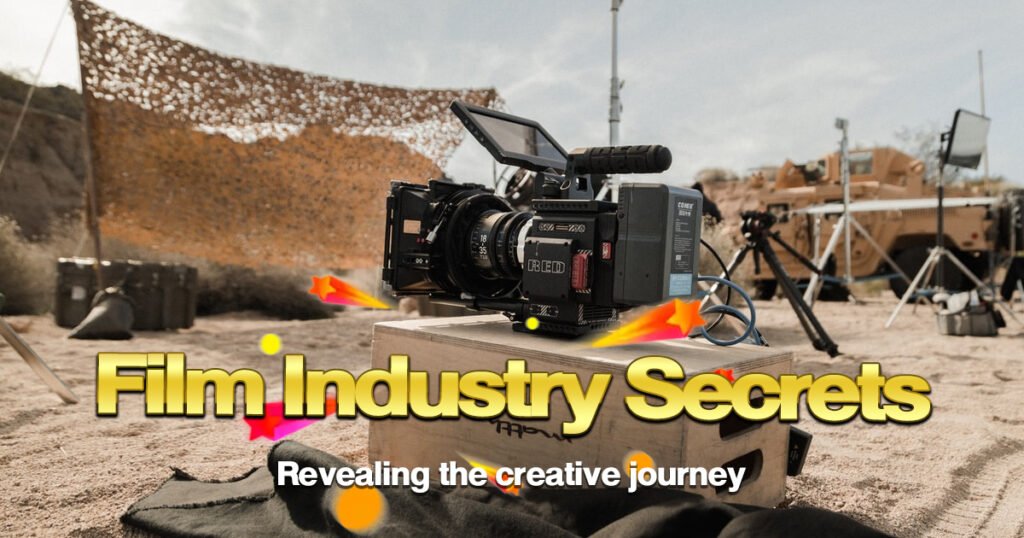Step into the enchanting world of filmmaking “Behind the scenes of the film industry” where dreams are woven into reality and creativity knows no bounds. As you know, each movie takes its toll before it becomes a movie. It’s difficult in the foreground and many times more complicated in the background. The editing of the filming time really took up a lot of time. At this moment, we will take you to get to know the background of the film industry. The difficulty of writing the script, translating the effects into the film and the vision the director wants to convey. If you are one of those people who are already interested in this topic, this article should be the answer for you.
The Role of Screenwriting: Crafting Stories that Captivate
Screenwriting is the most complex and foundational part of the filmmaking process. Because filmmaking requires roles, characters or stories to be conveyed through the creativity of the director, which is another charm of watching movies. We often decide whether a movie is fun or not based on the writing of the script. And of course, behind every captivating film there is an intricate writing process. Before it becomes a movie that impresses the audience, you have to test your skills in screenwriting as well.
Scripting Scenes: Unveiling the Artistry Behind Crafting Compelling Dialogue
Until we get a script or a fun scene to show in the movie theater. The director must be creative and be able to compose interesting events and situations into scenes. That’s right, we’re going to take you through the complicated process of writing a script. Starting from thinking of ideas, composing hypothetical situations, editing new scripts, and summarizing scripts that will be used. You can see all of this in the next section.
- The Genesis of Ideas
Most if not all screenplays come from personal experiences. It may come from historical events that have happened or the director’s wildest imagination. At this point, when the director has an idea that if the situation is set up it would be appropriate, additional relevant content information will be gathered. After that, it will be assembled with the parts that were originally thought of. We can see that many movies connect characters from 1 to 2, 3, 4, 5, etc. in a seamless way. That’s because the script was created and written in advance.
- Navigating the Creative Maze
When the screenwriter has a wonderful idea, the next step is to compose the idea to make it as best as possible. From thinking about cultivating the foundations of characters, storylines, and specific themes. After determining these parts, the screenwriter must think about how to put them together in a way that makes sense. At this point, it can take a long time to come up with the best script possible, after which you can share your ideas with the rest of the team.
- Creating a Storytelling Architecture
After laying out the elements in the idea and imagining the scenario. Next, the screenwriter must define each scene and the story structure and characters more clearly. Discuss and plan dialog of character development, stimulating emotions. Small conversations were started to be spoken aloud to compare the characters with their assumed roles.
- The Art of Revision
Once the character positions, film structure and theme are clearly laid out, Next, there will be a process of editing the script to suit it. In this step, the screenwriter polishes the screenplay of any excess or unnecessary elements. Each change often makes the discussion fun and spirited, with new twists and turns to prepare for filming in the next production process.
- Collaborative Symphony
When all other steps have been completed. Finally, it is about capturing the overall elements and composing them together, such as the director’s vision put into the film, the actors taking on roles to match the received content, and the storytelling being lively. Each member must communicate with each other to conclude at this stage before actual filming begins.
Cinematic Magic: Revealing the Art of Visual Effects
Using effects or editing CGI, digital effects, or the composition of still images and moving images are used. It’s also one of the behind-the-scenes things that make the movie reach its highest point. The art of visual effects involves the direct use of a team with knowledge and ability in this field. Any points that need to be added, subtracted or corrected; this team will complete before the film’s official launch date.
From page to screen: The evolution of adaptation
Another story behind a good movie comes from the pages that the director reads and feels is good and then changes it to be shown on the big screen. Sometimes a properly referenced paper story might be taken and adapted into a protagonist. Increase the role of characters that come from imagination. Once the conclusion is reached, they will evolve and adapt. This refers to the evolution in the challenge of success from changing something new to the point of having more creativity towards the work than before.
The director’s vision: Bring the story to life.
It cannot go without saying that the director’s vision is another achievement behind the film. The director’s vision is able to create a story from imagination until the movie truly comes to life. When combined with the creativity, skill of the quality crew and actors playing the roles are creating a successful movie is no longer difficult.
Many actors have been honoured with awards for the movies in which they have acted, and everyone expresses gratitude to the director for writing an outstanding screenplay. Therefore, aside from the talent of the actors and crew, there is also the director’s vision that is behind each success.

